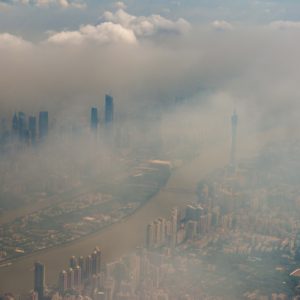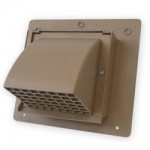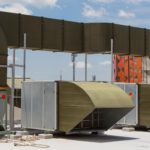 With spring in the air and summer on the horizon, perhaps you’re daydreaming about hitting the beach, mixing margaritas, and building sandcastles this summer, right?
With spring in the air and summer on the horizon, perhaps you’re daydreaming about hitting the beach, mixing margaritas, and building sandcastles this summer, right?
Unfortunately, this year, the onset of summer in North America will likely mean another round of intense wildfires, and that has major implications for HVAC technicians when they prepare to help manage the indoor air quality for their clients.
Health risks of wildfire smoke
When wildfires rage, entire geographic regions can experience some of the worst air pollution in North America. The smoke carries a mix of gases, ash, and dust that can be extremely hazardous to our health.
The most disruptive component of the smoke is fine and ultra-fine particulate matter, which can climb to over 300 micrograms per cubic meter, as opposed to the 10 micrograms per cubic meter on a normal day. And some of this fine particulate matter includes poly-nuclear aromatic hydrocarbons that are known carcinogens.
Fine particulate matter in the air poses a direct risk for anyone who suffers from asthma, allergies, and other lung problems. But it can also cause noticeable breathing problems for otherwise healthy individuals.
How wildfire smoke can damage HVAC systems
Wildfire smoke doesn’t just pose a risk to people. It can also be quite disruptive and even damaging to HVAC systems and equipment. When heating or air conditioning units are run during a wildfire event, particles in the smoke can infiltrate the entire HVAC system and linger for years and years.
Particulate matter often rests in the ductwork and can even find its way inside compressors and other equipment. Ash and soot can lead to dirty and restricted coils, and dirty water in cooler towers. This buildup can eventually overwhelm the filters and even cause high-pressure faults.
Corrosive organic acids are also often found in wildfire smoke. These acids have been known to be particularly damaging to metal surfaces, such as exterior roof vents and wall caps. For clients in regions often impacted by wildfire smoke, it would be wise to recommend an upgrade to vents and caps made from high-grade resin, as opposed to metal.
Overall, when ash and soot and other fine particulate matter find their way into the HVAC system, the system has to work harder than normal, which increases the risk of breakdown over time.
How HVAC technicians can improve indoor air quality during wildfire season
In areas affected by smoke, the best course of action is for people to stay indoors as much as possible and minimize their amount of outdoor activity. It’s therefore imperative to keep indoor air quality as high as possible during major wildfire events.
HVAC technicians are in a unique position to educate their clients ahead of time on the value of wildfire preparation.
In addition to making more frequent checkups on equipment, technicians can upgrade a client’s filters to the highest possible MERV rating. There’s also the option of installing a pre-filter further upstream, to prevent the main filter from overloading too quickly.
Portable electronic air cleaners are another recommendation an HVAC technician can make to their clients. These should be viewed as a supplemental assistance to the proper maintenance of the HVAC system. They help eliminate both particulate matter and gas-phase contaminants from the air.
Finally, there’s the option of installing UV lights, typically near the evaporator coils. UV lights use the ultraviolet end of the spectrum to destroy fine organic particules like bacteria or other organisms that may be present in wildfire smoke.



